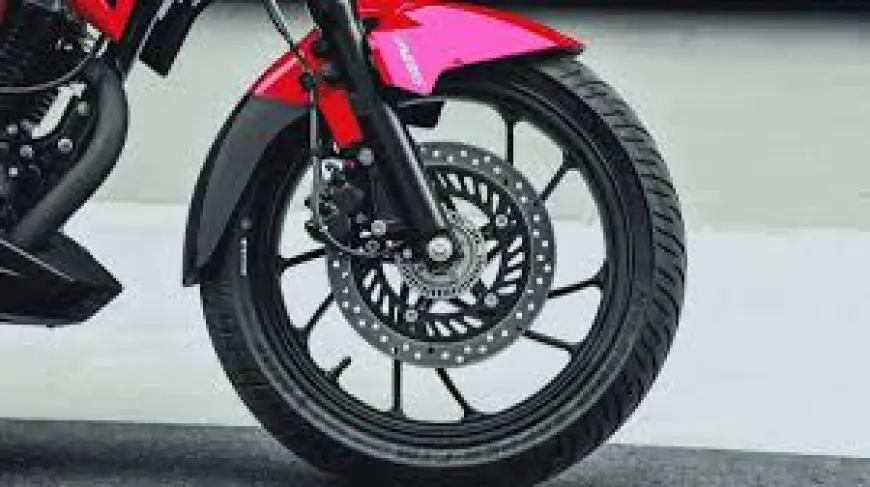Future of India Two Wheeler ABS Market by 2030
Motorcycles are less stable than cars due to their inherent design. A motorbike can become unsteady and slide or flip if the brakes are applied too firmly, locking up either the front or back wheels.

The India Two Wheeler ABS (Anti-Lock Braking System) Market is undergoing a remarkable transformation, fueled by increasing road safety concerns, evolving regulatory standards, and consumer demand for technologically advanced and safer mobility solutions. According to the latest market insights, this sector is poised for steady growth through 2029, with a significant boost expected from the rising penetration of electric two-wheelers and the growing emphasis on rider safety.
This comprehensive overview explores the key factors propelling the growth of the Indian two-wheeler ABS market, with dedicated sections on emerging trends, market drivers, industry highlights, competitive analysis, and the future outlook. It also underscores the strategic importance of ABS technology in both ICE (internal combustion engine) and electric two-wheeler segments.
Understanding the Role of ABS in Two-Wheelers
Anti-Lock Braking Systems (ABS) are crucial in enhancing vehicle control during emergency braking. By preventing wheel lock-up, ABS maintains traction with the road surface, reducing the likelihood of skidding and providing better steering control. For two-wheelers, which inherently possess less stability than four-wheelers, the adoption of ABS becomes all the more essential.
The system utilizes sensors to monitor wheel speed and identifies when one or both wheels are about to lock. Once detected, the ABS controller modulates brake pressure, ensuring that the vehicle remains stable and steerable under hard braking. This not only protects the rider but also improves overall riding confidence, especially in unpredictable road conditions.
Download Free Sample Report: https://www.techsciresearch.com/sample-report.aspx?cid=4756
Emerging Trends in India’s Two-Wheeler ABS Market
1. Technological Innovations in Braking Systems
Manufacturers are continuously investing in advanced brake systems such as dual-channel ABS, IMU-integrated (Inertial Measurement Unit) modules, and electro-hydraulic braking. Innovations like intelligent ABS (iABS) and lightweight compact systems are being developed to cater to various two-wheeler segments, including scooters, commuter bikes, and performance motorcycles.
2. Integration with Electric Two-Wheelers
As electric mobility gains traction across Indian cities, ABS integration in electric two-wheelers is gaining momentum. EV manufacturers are aligning with braking system providers to ensure safety is not compromised in lightweight, high-torque electric vehicles. The growing electric two-wheeler segment is expected to significantly contribute to ABS market growth in the coming years.
3. Collaborations and Strategic Partnerships
Key players are entering strategic partnerships to expand their technological capabilities and product portfolios. The collaboration between Bosch and Tektro to provide advanced braking systems for electric bikes is a prime example. These partnerships are essential for reducing system costs, enhancing modularity, and ensuring wider adoption.
4. Customization and Retrofitting Solutions
As the aftermarket for ABS expands, more companies are offering retrofit kits for older two-wheelers. These solutions are particularly appealing in semi-urban and rural regions, where older motorcycles still dominate. The introduction of cost-effective ABS retrofit options could significantly increase penetration beyond OEM-fitted models.
Market Drivers Fueling Growth
1. Rising Traffic Accidents and Safety Concerns
India continues to grapple with a high number of road accidents, many involving two-wheelers. ABS has been proven to drastically reduce fatal collisions by improving stability and control during emergency braking. Government-mandated ABS installation for bikes over 125cc has accelerated adoption and increased consumer awareness about road safety.
2. Regulatory Push and Mandates
In 2019, the Indian government mandated the installation of ABS in all motorcycles above 125cc, which served as a major catalyst for market growth. This regulation forced OEMs to incorporate the technology across models, improving mass adoption and reducing costs through economies of scale.
3. Growing Youth Population and Urban Mobility Needs
India’s burgeoning young population is increasingly turning to two-wheelers for mobility. Safety, fuel efficiency, and affordability are key purchasing considerations. With heightened awareness about vehicle safety, ABS has transitioned from being a premium feature to a necessity.
4. Electric Vehicle Revolution
The growth of electric scooters and motorcycles is further bolstering the demand for advanced braking systems. As EV adoption increases, especially in urban settings, manufacturers are equipping their models with ABS to comply with safety norms and offer enhanced user confidence.
Industry Key Highlights
- Vehicle Type: Motorcycles currently dominate the ABS market, driven by their widespread usage and the regulatory requirement for ABS in bikes over 125cc. Scooters, especially electric ones, are now catching up.
- Propulsion Type: While ICE engines lead the market, electric two-wheelers are showing a rapid CAGR, especially in urban regions where EV infrastructure is expanding.
- Channel Type: Single-channel ABS is popular in commuter bikes due to its cost-effectiveness, whereas dual-channel ABS is favored in high-performance and premium motorcycles.
- Engine Capacity Segmentation: The 126–250cc category remains dominant, but bikes above 400cc are witnessing a steady increase in ABS installation, especially in the premium and adventure-tourer segments.
- OEM vs Aftermarket: OEM-fitted ABS systems lead the market; however, retrofitting solutions are gaining interest in the aftermarket segment.
Competitive Landscape: Key Players in Focus
The Indian two-wheeler ABS market is highly competitive, with major global and local players investing in innovation and regional expansion:
- Robert Bosch GmbH – A market leader, Bosch continues to innovate with compact, modular ABS solutions designed for emerging markets.
- BWI Group – Offers affordable brake technologies suitable for entry-level motorcycles and scooters.
- Continental AG – Known for high-performance ABS modules integrated with vehicle dynamics systems.
- Honda Motor Company Ltd. – Integrates ABS across its premium and mid-segment bikes as standard.
- ZF TRW & WABCO TVS – Focus on scalable, dual-channel solutions.
- Hitachi Astemo Ltd. – Innovating in smart ABS modules with built-in sensors and data analytics.
- Autoliv Inc. – Expanding presence in India with a focus on EV-compatible braking systems.
These companies are increasingly partnering with OEMs and EV startups to broaden their market reach and accelerate ABS integration.
Future Outlook: India Two-Wheeler ABS Market by 2029
India’s two-wheeler ABS market is projected to witness steady growth, with increased consumer awareness, regulatory support, and demand for safe mobility driving adoption. By 2029, both ICE and electric two-wheelers are expected to offer ABS as standard across several price points. With ABS technology evolving to offer connected features, real-time diagnostics, and AI-enabled braking systems, its role in next-gen mobility cannot be understated.
Rural and tier-2/tier-3 markets, which have traditionally lagged in safety feature adoption, are expected to catch up due to awareness campaigns, growing incomes, and wider access to affordable ABS-equipped vehicles.
10 Key Benefits of the India Two-Wheeler ABS Market Report
- Comprehensive Market Forecast till 2029 segmented by vehicle type, engine capacity, and region.
- In-depth Analysis of Trends such as EV integration and sensor technology in braking systems.
- Insight into Regulatory Framework impacting ABS adoption across segments.
- Competitive Intelligence on top players and their innovation pipelines.
- Segmentation Insights into OEM and aftermarket channels.
- Data-Driven Insights using historical data, current dynamics, and predictive analytics.
- Technological Roadmap highlighting future evolution in ABS systems.
- Investment Opportunities in high-growth regions and electric vehicle segments.
- Market Entry Strategy Recommendations for new players and investors.
- Customizable Data options to tailor the report to specific business needs.
Conclusion
India’s two-wheeler ABS market is not just growing—it’s evolving in sophistication, accessibility, and necessity. Driven by government regulation, increased public safety awareness, and the rapid rise of electric mobility, ABS is no longer an optional luxury but an essential standard.
Manufacturers, technology providers, and policymakers alike have recognized ABS’s vital role in reducing fatalities and enhancing rider confidence. As India advances toward smarter, safer, and more sustainable transportation, ABS will continue to be a pivotal technology shaping the future of two-wheeler mobility.
With the confluence of technology, policy, and consumer behavior, the India Two Wheeler ABS Market is on a firm path to transformational growth, ensuring that riders across the country can enjoy a safer and more secure journey.
Contact Us-
Mr. Ken Mathews
708 Third Avenue,
Manhattan, NY,
New York – 10017
Tel: +1-646-360-1656
Email: [email protected]
Website: www.techsciresearch.com
What's Your Reaction?
 Like
0
Like
0
 Dislike
0
Dislike
0
 Love
0
Love
0
 Funny
0
Funny
0
 Angry
0
Angry
0
 Sad
0
Sad
0
 Wow
0
Wow
0



















































